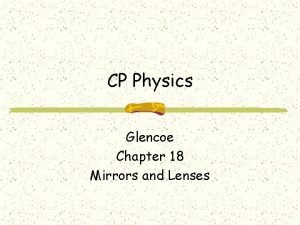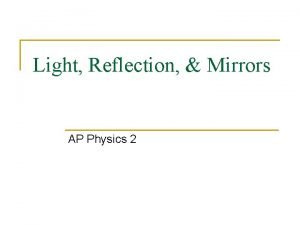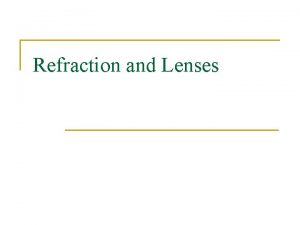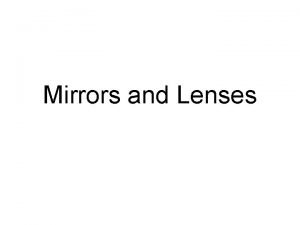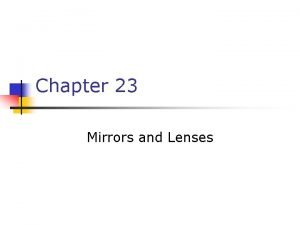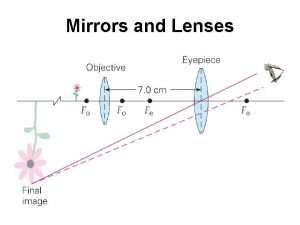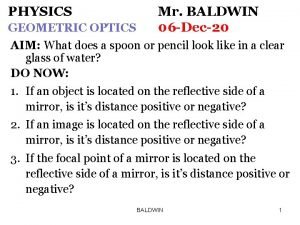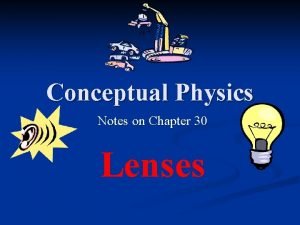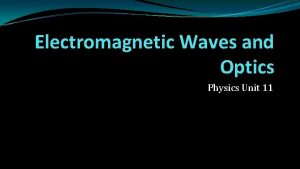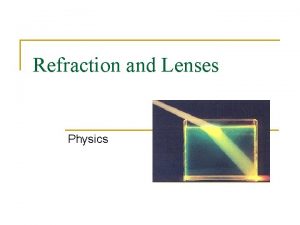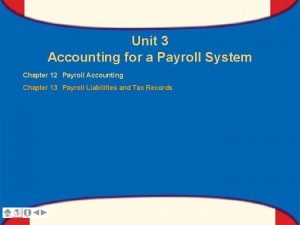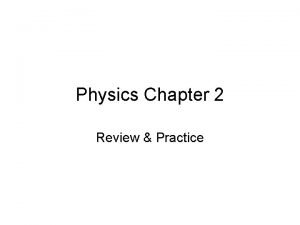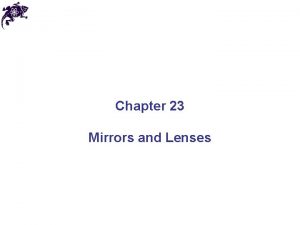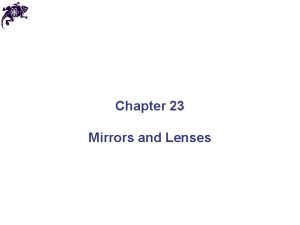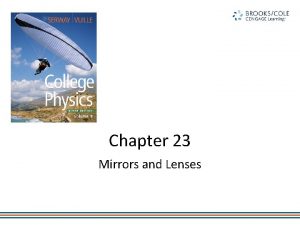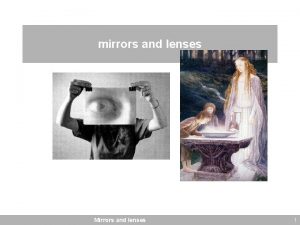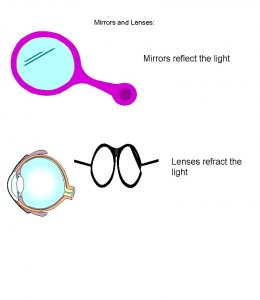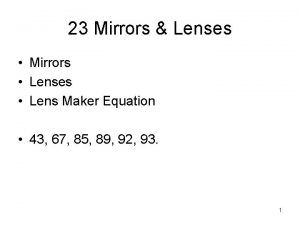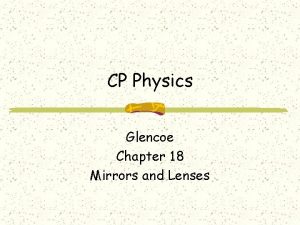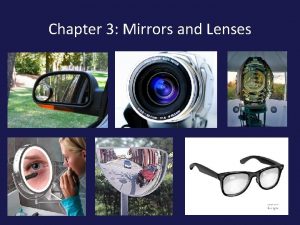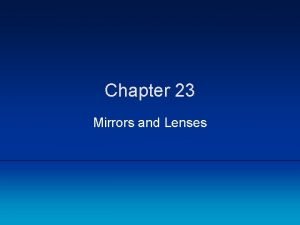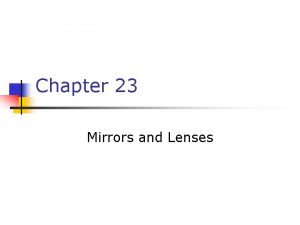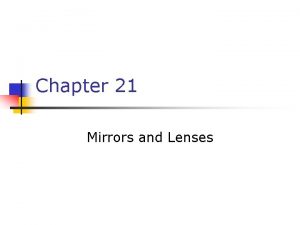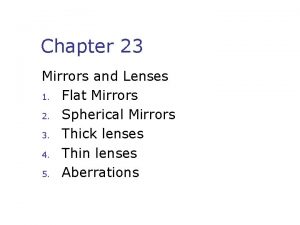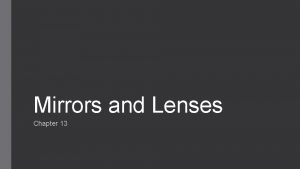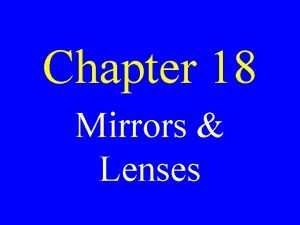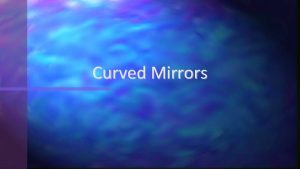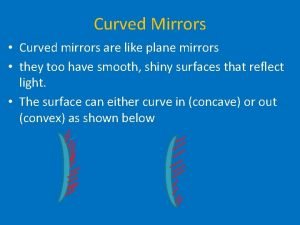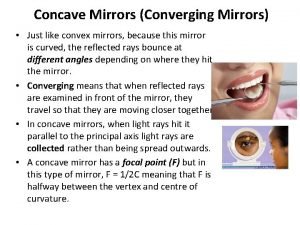CP Physics Glencoe Chapter 18 Mirrors and Lenses






















- Slides: 22

CP Physics Glencoe Chapter 18 Mirrors and Lenses

TEKS Objective: 8 C The student is expected to: Interpret the role of light wave characteristics and behaviors found in medicinal and industrial applications.

Mirrors Three types of mirrors: 1. Plane 2. Concave 3. convex

Vocabulary do = distance the object is from the mirror ho = height of the object di = distance the image is from the mirror hi = height of the image Virtual image – is an optical illusion, cannot be projected onto a white screen. Magnification = 1

Plane or flat mirror The image produced by a flat mirror is behind the mirror It is an optical illusion, it is a virtual image It is upright do = di ho = h i

Flat mirror

http: //www. physicsclassroom. com/mm edia/optics/ifpm. html



Flat mirror has left and right hand reversal

Lenses: two main types Convex lens = converging lens Concave lens = diverging lens Eyeglasses were 1 st made in the 13 th century Contacts were 1 st made in Houston in 1888

Ray diagrams: 1 st ray goes in parallel to principal axis, refracts at the line of symmetry, goes out through the focal point on the other side of the lens 2 nd ray goes in through the focal point, refracts at the line of symmetry, and goes out parallel to the principal axis

Concave Lens Diverging lens Focal length is negative Image is on same side as object Image is virtual, upright and reduced Corrects nearsightedness


1 st ray goes in parallel to the principal axis, refracts at the line of symmetry, and refracts out as if through the 1 st focal point, must do a trace back 2 nd ray goes from the top of the object straight through the center of the lens without refracting.

The Human Eye


Near sightedness


Far sightedness


Telescope Two converging lenses
 Physics classroom lenses and mirrors
Physics classroom lenses and mirrors Ap physics 2 mirrors and lenses
Ap physics 2 mirrors and lenses Mirror lens equation
Mirror lens equation Mirrors and lenses
Mirrors and lenses Mirrors and lenses
Mirrors and lenses Mirror lens equation
Mirror lens equation Sign convention for lenses in tabular form
Sign convention for lenses in tabular form Conceptual physics notes
Conceptual physics notes Physics 11-06 image formation by mirrors
Physics 11-06 image formation by mirrors Chapter 19 vocabulary glencoe health
Chapter 19 vocabulary glencoe health Chapter 5 lesson 3 suicide prevention
Chapter 5 lesson 3 suicide prevention Glencoe health chapter 1 understanding health and wellness
Glencoe health chapter 1 understanding health and wellness Chapter 1 understanding health and wellness
Chapter 1 understanding health and wellness Types of lenses physics
Types of lenses physics Chapter 17 reflection and mirrors
Chapter 17 reflection and mirrors Problem 14-1 recording merchandising transactions answers
Problem 14-1 recording merchandising transactions answers Glencoe accounting chapter 12
Glencoe accounting chapter 12 Physics chapter 2 review
Physics chapter 2 review Glencoe health chapter 2
Glencoe health chapter 2 Chapter 7 family relationships
Chapter 7 family relationships Chapter 5 lesson 2 mental disorders
Chapter 5 lesson 2 mental disorders Glencoe health chapter 5
Glencoe health chapter 5 Glencoe chapter 5
Glencoe chapter 5
